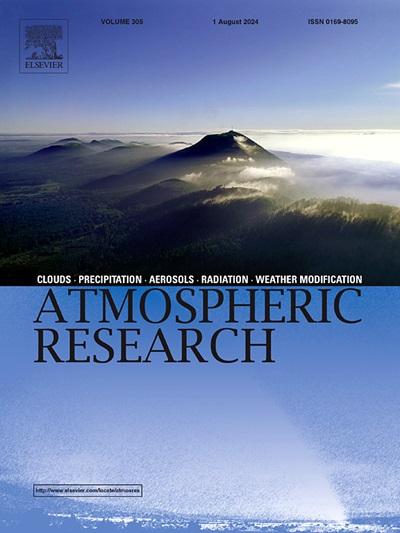Particulate-bound PAHs, nitro and oxy-PAHs from small scale boilers fueled with non-woody biomass
IF 4.5
2区 地球科学
Q1 METEOROLOGY & ATMOSPHERIC SCIENCES
引用次数: 0
Abstract
Polycyclic Aromatic Hydrocarbons (PAHs) and their derivatives (oxy-PAHs and nitro-PAHs) are released during the biomass combustion process, both in the exhaust gas and bound to the particulate matter (PM). The composition of PAHs, including the number of carbon atoms and their molecular weight, is directly related to their toxicity. The aim of this work was to determine the PM-bound emission of the 16 EPA priority PAHs and some of their nitrated and oxygenated derivatives from the combustion of exhausted olive cake (EOC) and almond shell (AS) in a domestic boiler at two loads, nominal (55 kW) and partial (24 kW). In addition, pine pellet (P) was investigated as a reference fuel. Total PAHs emissions ranged from 1.7 to 8.4 μg/kg and from 5.7 to 357.8 μg/kg at nominal and partial load, respectively. While AS was the most PAHs-forming fuel at nominal load, EOC caused the highest emission at low load. The influence of the boiler load was quite relevant regarding the molecular weight of PAHs bound to PM. At nominal load, EOC and AS were dominated by low molecular weight compounds (LMW) and high molecular weight compounds (HHW), respectively, while at partial load medium molecular weight (MMW) PAHs gained importance for AS (59 %) and EOC PM were clearly dominated by high molecular weight PAHs (99 %). The higher unburned matter at partial load led to higher oxy and nitro-PAHs concentrations for the three biomass fuels, being in all cases 3 to 4 orders of magnitude lower than their derivative PAHs. EOC at partial load presented the highest value of KEsum and therefore its use in a modular boiler is less recommended from the health risk point of view.
求助全文
约1分钟内获得全文
求助全文
来源期刊

Atmospheric Research
地学-气象与大气科学
CiteScore
9.40
自引率
10.90%
发文量
460
审稿时长
47 days
期刊介绍:
The journal publishes scientific papers (research papers, review articles, letters and notes) dealing with the part of the atmosphere where meteorological events occur. Attention is given to all processes extending from the earth surface to the tropopause, but special emphasis continues to be devoted to the physics of clouds, mesoscale meteorology and air pollution, i.e. atmospheric aerosols; microphysical processes; cloud dynamics and thermodynamics; numerical simulation, climatology, climate change and weather modification.
 求助内容:
求助内容: 应助结果提醒方式:
应助结果提醒方式:


